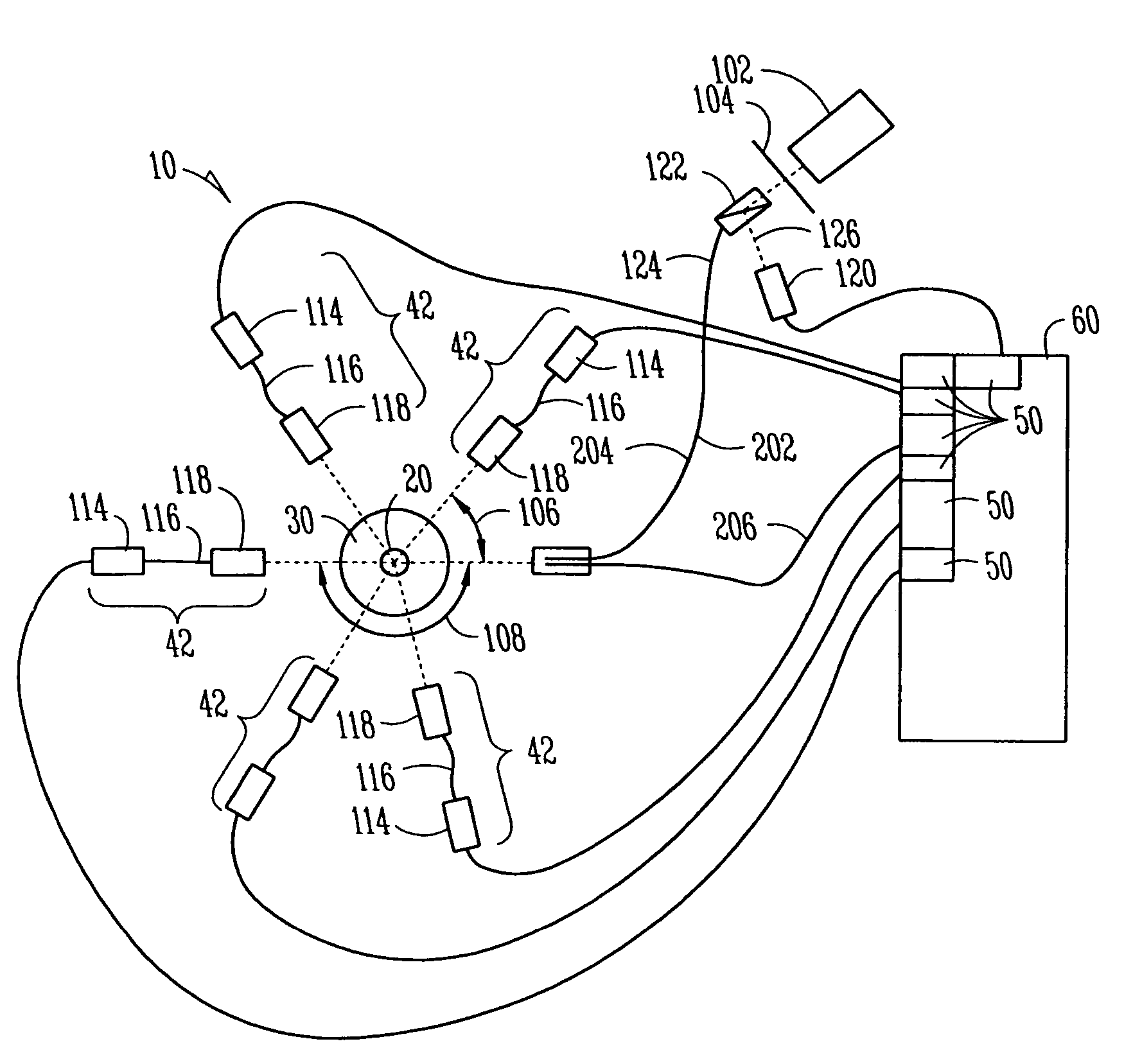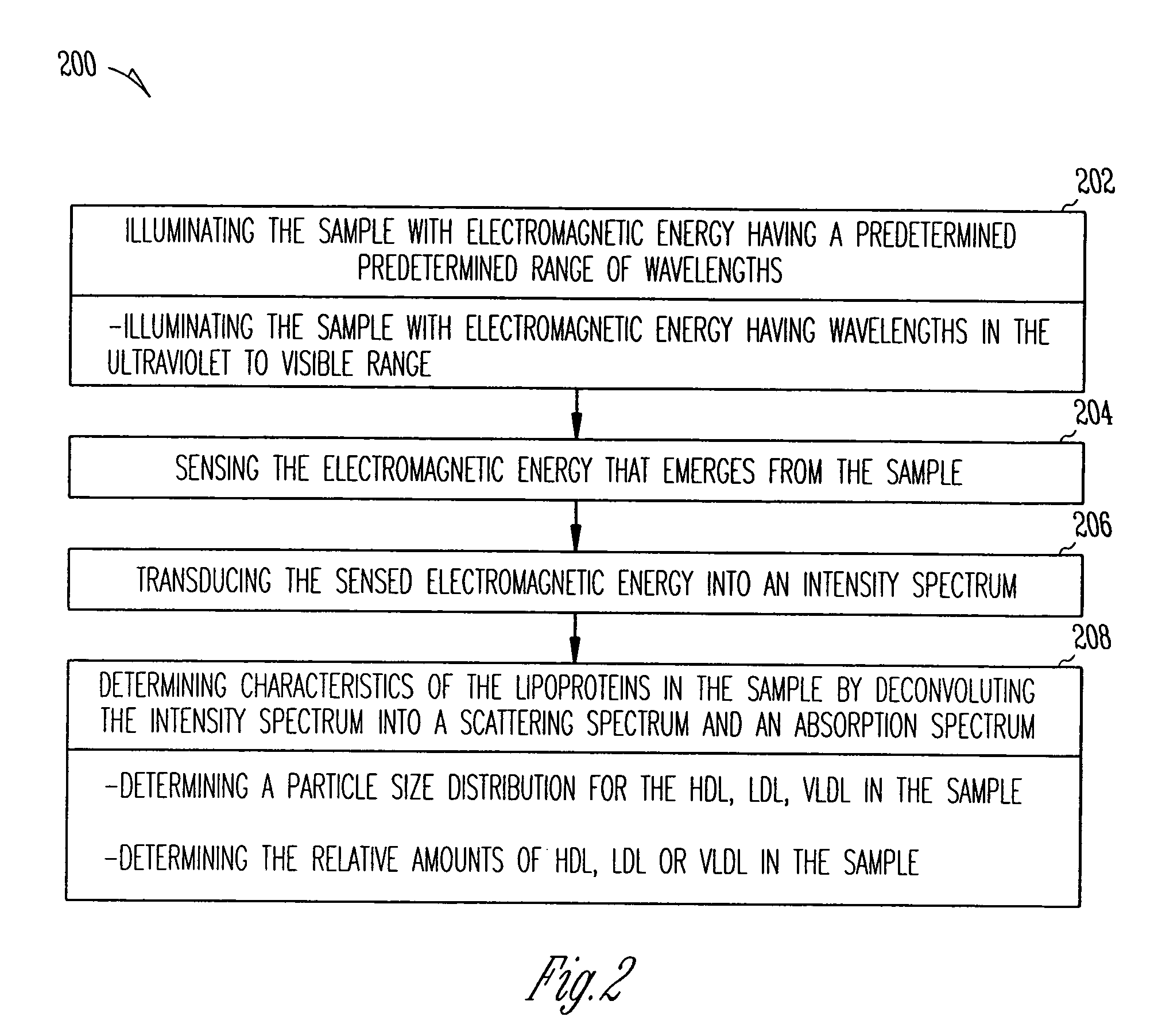Optical method and system to determine distribution of lipid particles in a sample
a technology applied in the field of optical method and system for characterizing lipoproteins in samples, can solve problems such as particle separation
- Summary
- Abstract
- Description
- Claims
- Application Information
AI Technical Summary
Benefits of technology
Problems solved by technology
Method used
Image
Examples
example
[0052]A purified fraction of Lp(a) particles was obtained in a 1 mL sample. Intensity spectra of the Lp(a) fraction were obtained by illuminating the sample as described above. The spectra were measured as a function of the particle concentration by recording in an Hp-8454 diode array spectrophotometer using a 1 cm path length micro-cuvette. Standard buffer saline was used as a diluent.
[0053]A set of optical properties was derived from the intensity spectra. The optical properties of the sample confirmed a portion of the theoretical optical properties that were previously determined.
[0054]FIG. 4 shows the measured spectra of the purified Lp(a) sample as function of concentration while FIG. 5 shows the normalized optical density spectrum for the sample. The normalization of the spectra eliminates the effect of the number of particles (as explained in C. E Alupoaei, J. A. Olivares, and L. H. Garcia-Rubio, “Quantitative Spectroscopy Analysis of prokaryotic Cells: Vegetative Cells and S...
PUM
| Property | Measurement | Unit |
|---|---|---|
| angle | aaaaa | aaaaa |
| size | aaaaa | aaaaa |
| path length | aaaaa | aaaaa |
Abstract
Description
Claims
Application Information
 Login to View More
Login to View More - R&D
- Intellectual Property
- Life Sciences
- Materials
- Tech Scout
- Unparalleled Data Quality
- Higher Quality Content
- 60% Fewer Hallucinations
Browse by: Latest US Patents, China's latest patents, Technical Efficacy Thesaurus, Application Domain, Technology Topic, Popular Technical Reports.
© 2025 PatSnap. All rights reserved.Legal|Privacy policy|Modern Slavery Act Transparency Statement|Sitemap|About US| Contact US: help@patsnap.com



